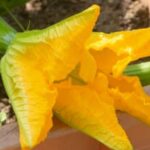Are you a beginner looking to start vegetable gardening in Canada? Whether you live in the cool coastal climate of British Columbia or the harsh winters of Nova Scotia, vegetable gardening can be a rewarding and fulfilling hobby. This article will guide you through the basics of vegetable gardening for beginners in Canada, from choosing the right vegetables to understanding the climate impacts and essential tools needed for your garden.
When it comes to vegetable gardening for beginners in Canada, there are several important factors to consider. From selecting the right vegetables that thrive in Canadian climates to understanding the impact of weather on your garden, there’s a lot to learn. This guide will provide you with all the information you need to get started on your journey to becoming a successful Canadian vegetable gardener.
In addition to choosing the right vegetables and understanding the climate, it’s also crucial for beginner gardeners in Canada to know how to prepare and maintain their gardens. With the proper tools and supplies, as well as tips for selecting the perfect location for your garden, you’ll be well on your way to enjoying a plentiful harvest of homegrown vegetables.
Choosing the Right Vegetables for Your Canadian Garden
When it comes to vegetable gardening for beginners in Canada, it’s important to choose the right vegetables that will thrive in the Canadian climate. Here are some vegetables that are well-suited for Canadian gardens:
- Carrots: Carrots are a great choice for Canadian gardens as they can tolerate the cooler temperatures in spring and fall. They also don’t mind the occasional frost.
- Tomatoes: While tomatoes are a bit more challenging to grow in Canada due to the shorter growing season, there are many varieties that have been developed specifically for colder climates.
- Peas: Peas are excellent for Canadian gardens as they can be planted early in the spring and harvested before the hotter summer temperatures take hold.
- Potatoes: Potatoes are hardy and can withstand the colder temperatures of Canadian winters. They are a great staple crop for any Canadian garden.
It’s also important to consider the space you have available in your garden when choosing which vegetables to plant. If you have limited space, you may want to focus on smaller or compact varieties of vegetables or those that can be grown vertically.
In addition to choosing vegetables that are well-suited for the Canadian climate, you should also consider which vegetables you and your family enjoy eating. There’s no point in growing vegetables that no one will eat, so be sure to include your family members in the decision-making process when choosing which vegetables to plant in your Canadian garden.
Remember, gardening is not just about planting and harvesting – it’s about enjoying the process and savoring the fruits of your labor at harvest time.
Understanding the Canadian Climate and Its Impact on Vegetable Gardening
Canada’s climate can vary greatly from region to region, and this diversity can have a significant impact on vegetable gardening. Understanding the climate in your specific area is crucial for successful gardening. Here are some key factors to consider when it comes to the Canadian climate and its impact on vegetable gardening:
- Temperature variations: Canada experiences dramatic temperature changes throughout the year, with cold winters and hot summers. It’s important to choose vegetables that can tolerate these temperature fluctuations, such as carrots, potatoes, and cabbage.
- Frost dates: Knowing the average frost dates in your area is essential for planning your planting schedule. You’ll need to select vegetables that can withstand late spring or early fall frosts, such as kale, spinach, and beets.
- Precipitation levels: The amount of rainfall in your region will also impact your vegetable garden. If you live in a drier area, you might need to irrigate more frequently or choose drought-resistant plants like tomatoes, peppers, and zucchini.
- Length of growing season: Different regions in Canada have varying lengths of growing seasons. Understanding the length of your local growing season will help you select vegetables that have enough time to mature before the first frost hits.
By taking these climate factors into account, beginner vegetable gardeners in Canada can make informed decisions about which vegetables to grow and how best to care for them based on their local climate conditions.
In addition to these general considerations about the Canadian climate’s impact on vegetable gardening, it’s also helpful to seek out local agricultural extension resources or gardening clubs in your area. These organizations often provide specific guidance tailored to local conditions and can offer valuable insights into successful vegetable gardening practices based on the Canadian climate.
Overall, by being mindful of Canada’s diverse climates and understanding their impacts on vegetable gardening, beginners can set themselves up for a successful growing season with bountiful harvests of delicious homegrown produce.
Essential Tools and Supplies for Beginner Vegetable Gardeners in Canada
When starting a vegetable garden in Canada, it’s essential to have the right tools and supplies to ensure success. As a beginner in vegetable gardening for beginners Canada, there are a few key items that you will need to invest in to set up your garden properly.
Basic Tools
You will need basic gardening tools such as a trowel, hand fork, hoe, and watering can. These tools will help you with planting seeds, weeding, and maintaining your garden. Additionally, investing in a good pair of gardening gloves is important to protect your hands while working in the soil.
Quality Soil and Fertilizer
The quality of your soil is crucial for the health of your plants. Consider investing in high-quality soil and organic fertilizer to provide the necessary nutrients for your vegetables. Canadian gardeners should also be mindful of the pH levels of their soil and may need to consider products like lime or sulfur to adjust acidity levels.
Protection and Support
To protect your plants from harsh Canadian weather conditions, consider investing in row covers or cloches. Additionally, trellises or cages may be necessary for certain vegetable plants that require support as they grow. These supplies will help ensure the longevity and productivity of your garden.
By equipping yourself with these essential tools and supplies, you’ll be well-prepared to start your vegetable gardening journey in Canada. Taking the time to gather these items will set you up for success as you begin cultivating your own homegrown produce right in your backyard.
Selecting the Perfect Location for Your Canadian Vegetable Garden
Sunlight and Shade Requirements
One of the most important factors to consider when selecting a location for your Canadian vegetable garden is the amount of sunlight it receives. Most vegetables require at least 6-8 hours of direct sunlight per day to thrive, so it’s essential to choose a spot in your yard that gets plenty of sun.
Additionally, you’ll want to consider the shade patterns in your yard throughout the day, as some vegetables may benefit from partial shade during the hottest part of the day.
Soil Quality and Drainage
The quality of your soil and its drainage capabilities are also crucial considerations when choosing a location for your Canadian vegetable garden. Ideally, you’ll want to select an area with loamy, well-draining soil that is rich in organic matter. Test your soil’s pH levels and nutrient content before planting to ensure optimal growing conditions for your vegetables. In addition, avoid areas with poor drainage or compacted soil, as this can lead to waterlogged roots and rotting plants.
Proximity to Water Source
Finally, when selecting the perfect location for your Canadian vegetable garden, consider its proximity to a water source. Whether you plan on hand-watering or using an irrigation system, having easy access to water is essential for maintaining a healthy garden. Choose a location that allows for convenient watering without having to haul heavy hoses or buckets long distances.
By carefully considering these factors and selecting a suitable location for your Canadian vegetable garden, you will set yourself up for success and ensure that your plants have the best possible chance of thriving in their new home.
Tips for Preparing and Maintaining Your Canadian Vegetable Garden
When it comes to vegetable gardening for beginners in Canada, proper preparation and maintenance are essential for a successful harvest. One of the first tips for preparing your Canadian vegetable garden is to test the soil.
You can purchase a soil testing kit at your local gardening center or send a sample to a lab for analysis. Understanding the pH levels and nutrient content of your soil will help you determine what amendments are necessary to create an optimal growing environment for your vegetables.
In addition to testing the soil, beginner vegetable gardeners in Canada should also focus on creating the right planting schedule. The Canadian climate varies greatly depending on the region, so it’s important to know when to start seeds indoors, when to transplant seedlings outdoors, and when to directly sow seeds into the ground. Researching the recommended planting dates for your specific location will set you up for success and maximize your harvest.
Maintaining your Canadian vegetable garden involves regular watering, weeding, and monitoring for pests and diseases. In Canada, the climate can be unpredictable, with periods of both drought and heavy rainfall. Using mulch around your plants can help retain moisture in the soil during dry spells, while also suppressing weed growth. Additionally, staying vigilant against common pests such as aphids and cabbage worms will protect your crops from damage.
| Essential Tools | Supplies |
|---|---|
| Garden trowel | Seeds |
| Garden hoe | Seed starting mix |
| Garden rake | Fertilizer |
| Gardening gloves | Mulch |
Dealing With Common Pests and Diseases in Canadian Vegetable Gardens
When it comes to vegetable gardening for beginners in Canada, it’s essential to be prepared for the challenges that pests and diseases can bring. Some common pests that can wreak havoc on your Canadian vegetable garden include aphids, cabbage worms, and potato beetles. These pests can quickly damage your crops if not dealt with promptly and effectively.
In addition to pests, Canadian vegetable gardens are also susceptible to various diseases such as blight, powdery mildew, and damping-off. These diseases can cause widespread damage to your plants if left unchecked. It’s important for beginner vegetable gardeners in Canada to familiarize themselves with the signs and symptoms of these common ailments in order to address them before they become a serious problem.
One way to prevent pests and diseases from taking over your Canadian vegetable garden is to practice good garden hygiene. This includes regular weeding, proper spacing between plants, and maintaining a clean garden environment. Additionally, using natural pest control methods such as companion planting and introducing beneficial insects can help keep these issues at bay. By staying vigilant and proactive, beginner vegetable gardeners in Canada can enjoy a healthy and thriving garden throughout the growing season.
| Common Pests | Common Diseases |
|---|---|
| Aphids | Blight |
| Cabbage Worms | Powdery Mildew |
| Potato Beetles | Damping-off |
Harvesting and Enjoying Your Homegrown Vegetables in Canada
As you enjoy the sights and scents of your thriving Canadian vegetable garden, it’s important to remember that all your hard work is about to pay off. Harvesting your homegrown vegetables is a rewarding experience that allows you to reap the benefits of your efforts. Whether you’ve grown juicy tomatoes, crisp cucumbers, or vibrant bell peppers, the time has finally come to enjoy the fruits of your labor.
The satisfaction of harvesting vegetables from your own garden goes beyond just the taste and freshness. It also promotes a sense of self-sufficiency, knowing that you can produce food for yourself and your family right in your own backyard. By engaging in vegetable gardening for beginners in Canada, you are taking an important step towards sustainable living and connecting with the natural world around you.
After harvesting your homegrown vegetables, be sure to savor the flavors through delicious meals and recipes. Whether it’s a refreshing salad with freshly picked greens or a hearty stir-fry filled with just-picked veggies, there’s nothing quite like enjoying the taste of food that you’ve nurtured from seed to plate.
Embrace the joy of cooking and sharing meals made with your own homegrown produce, and take pride in knowing that you are making healthy choices for yourself and those around you through vegetable gardening for beginners in Canada.
Frequently Asked Questions
What Is the Easiest Vegetable to Grow in Canada?
The easiest vegetable to grow in Canada is likely the potato. Potatoes are quite hardy and can withstand cooler climates, making them a great option for Canadian gardeners, particularly beginners.
What Are the Best Vegetables for a Beginner Garden?
For beginners in Canada, some of the best vegetables to plant in a garden include lettuce, carrots, radishes, and green beans. These vegetables are relatively easy to grow and maintain, making them suitable for those new to gardening.
How Do I Start a Vegetable Garden in Canada?
To start a vegetable garden in Canada, begin by choosing the right location with plenty of sunlight and well-drained soil. Next, decide which vegetables you want to grow based on your region’s climate and growing season.
Then, prepare the soil by tilling it and adding compost or fertilizer. Finally, plant your chosen vegetables according to their specific requirements for depth and spacing, and make sure to water them regularly.

If you’re looking to get into vegetable gardening, or are just looking for some tips on how to make your current garden better, then you’ve come to the right place! My name is Ethel and I have been gardening for years. In this blog, I’m going to share with you some of my best tips on how to create a successful vegetable garden.





